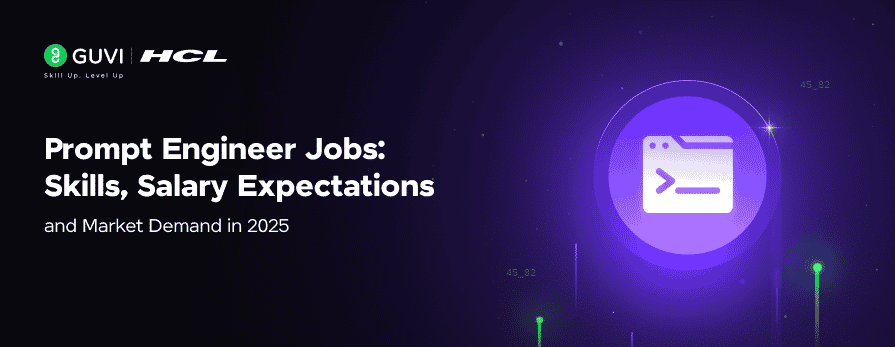
Prompt Engineer Jobs: Skills, Salary Expectations and Market Demand in 2025
Aug 29, 2025 6 Min Read 5283 Views
(Last Updated)
A 2025 report by LinkedIn Talent Insights revealed that prompt engineer jobs have grown at a faster rate than any other AI role globally. As organizations integrate language models into critical business functions, the demand for skilled professionals who can design, test, and refine AI prompts is increasing rapidly.
This blog offers a detailed and technical examination of the skill sets, responsibilities, salary benchmarks, and hiring expectations that define jobs for prompt engineering candidates today.
If you’re preparing for this role or hiring for it, this breakdown will help you comprehend what truly matters in 2025.
Table of contents
- Why AI Is Now Accessible to Non-Technical Professionals
- The rise of no-code and low-code tools
- Pre-trained AI models
- The shift toward natural-language interfaces
- Business demand for AI-assisted workflows
- Start With the Fundamentals: What You Really Need To Know
- Core concepts worth grasping
- How to Learn AI and Build Apps: Step by Step
- Step 1: Experiment with AI tools first, don’t study them
- Step 2: Learn to write prompts that actually work
- Step 3: Understand the basics of web apps
- Step 4: Learn one no-code or low-code platform
- Step 5: Connect your app to an AI model
- Step 6: Build your first tiny end-to-end project
- How AI App Development Actually Works Behind the Scenes
- The Skills You Actually Need (And How to Build Them Naturally)
- Problem-solving
- Prompt engineering
- Understanding AI limitations
- Data organization
- Prototyping mindset
- Choosing the Right Tools for Learning and Building
- For learning AI fundamentals
- For hands-on experimentation
- For building apps
- For managing AI interactions
- What Web-AI Apps You Can Actually Build Without Coding
- Ethics and Safety: What You Should Always Keep in Mind
- What a Realistic Learning Timeline Looks Like
- Why Web-AI Apps Are a Huge Opportunity for Non-Technical Creators
- Conclusion
- FAQs
- Can a non-technical person really learn AI?
- How do I start learning AI if I have no technical background?
- Do I need to learn coding to build an AI web app?
- What type of AI projects are best for beginners?
- How long does it take to build a basic AI app?
What is a Prompt Engineer?
A prompt engineer is responsible for crafting and optimizing inputs that control the behavior of large language models. These inputs or prompts are not generic queries. They are carefully structured command sets designed to guide models like GPT-4, Claude, and Gemini toward accurate, consistent, and context-aware outputs.
Types of Prompt Engineering Jobs
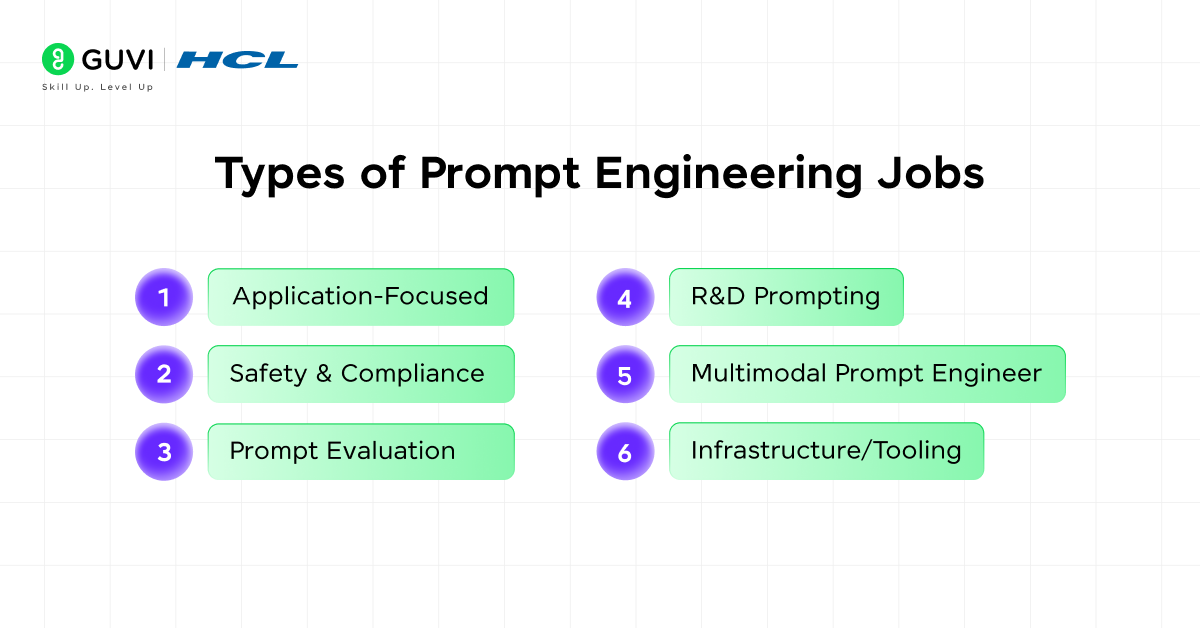
Prompt engineering is no longer a monolithic role. As model usage deepens across industries, companies are defining prompt roles with greater specificity. Each role serves a distinct function within LLM workflows depending on business use cases, safety needs, or infrastructure maturity
- Application-Focused Prompt Engineer
This role is built around prompt creation for a defined use case. Engineers working in e-commerce, finance, education, or AI for demand forecasting focus on business-specific workflows. The prompts are tightly coupled with input variables, domain language, and required output formats.
Average Salary (India): ₹3.2 L – ₹4.6 L per year
Source: AmbitionBox
Key Roles:
- Designing reusable prompt templates based on structured and unstructured inputs.
- Collaborating with domain experts to define instruction formats.
- Reducing model drift by enforcing semantic constraints.
- Evaluating prompt logic using real-world business data.
- Building modular prompt libraries aligned with internal use cases.
- Prompt Safety and Compliance Engineer
In regulated environments, output safety is a mandatory layer. Engineers in this role develop prompts that meet legal, ethical, and brand standards. These prompts often involve disclaimers, tone boundaries, or prohibited language filters.
Average Salary (India): ₹3.2 L – ₹4.6 L per year
Source: AmbitionBox
Key Roles:
- Writing prompts with safety constraints and exclusion patterns.
- Testing prompts across high-risk input scenarios.
- Collaborating with legal and policy teams to define acceptable outputs.
- Logging safety violations and proposing prompt-level adjustments.
- Aligning prompts with internal compliance guidelines and external regulations.
- Prompt Evaluation and Testing Engineer
Testing and monitoring prompt behavior requires dedicated engineering practices. These engineers focus on prompt scoring, regression handling, and output observability. Their work supports version reliability and performance tracking.
Average Salary (India): ₹3.2 L – ₹4.6 L per year
Source: AmbitionBox
Key Roles:
- Creating A/B tests across different prompt styles or models.
- Automating prompt regression checks after model updates.
- Defining custom metrics for prompt output quality.
- Monitoring token usage and response latency under prompt load.
- Building test dashboards to visualize prompt-level trends.
- Research and Development Prompt Engineer
R&D prompt engineers sit between model researchers and product engineers. Their work supports experimental prompting methods and advanced LLM use cases. This role often exists in labs or with machine learning consulting services.
Average Salary (India): ₹3.2 L – ₹4.6 L per year
Source: AmbitionBox
Key Roles:
- Supporting model alignment experiments with controlled prompts.
- Writing prompt analysis reports with token-level interpretation.
- Contributing to internal research benchmarks or pilot studies.
- Testing prompt performance across GPT-4, Claude, and Gemini.
- Multimodal Prompt Engineer
This role involves crafting prompts for models that process text alongside images, audio, or tabular data. These prompts control outputs in visual generation tools or audio-based instruction systems.
Average Salary (India): ₹3.2 L – ₹4.6 L per year
Source: AmbitionBox
Key Roles:
- Designing cross-modal prompts for image or hybrid models.
- Managing sequence logic for model response ordering.
- Formatting prompts with spatial or image-structured references.
- Testing consistency across output modalities.
- Aligning prompts with product-specific UX requirements.
- Prompt Infrastructure and Tooling Engineer
These engineers build the systems that allow teams to scale and maintain prompt logic. Their work includes version control, documentation, and interface design for prompt teams.
Average Salary (India): ₹3.2 L – ₹4.6 L per year
Source: AmbitionBox
Key Roles:
- Developing internal prompt version registries.
- Creating prompt authoring tools with validation checks.
- Standardizing naming conventions and metadata tagging.
- Integrating prompts into CI/CD deployment workflows.
- Managing prompt access, security, and rollback systems.
Top Skills Required for Prompt Engineer Jobs in 2025
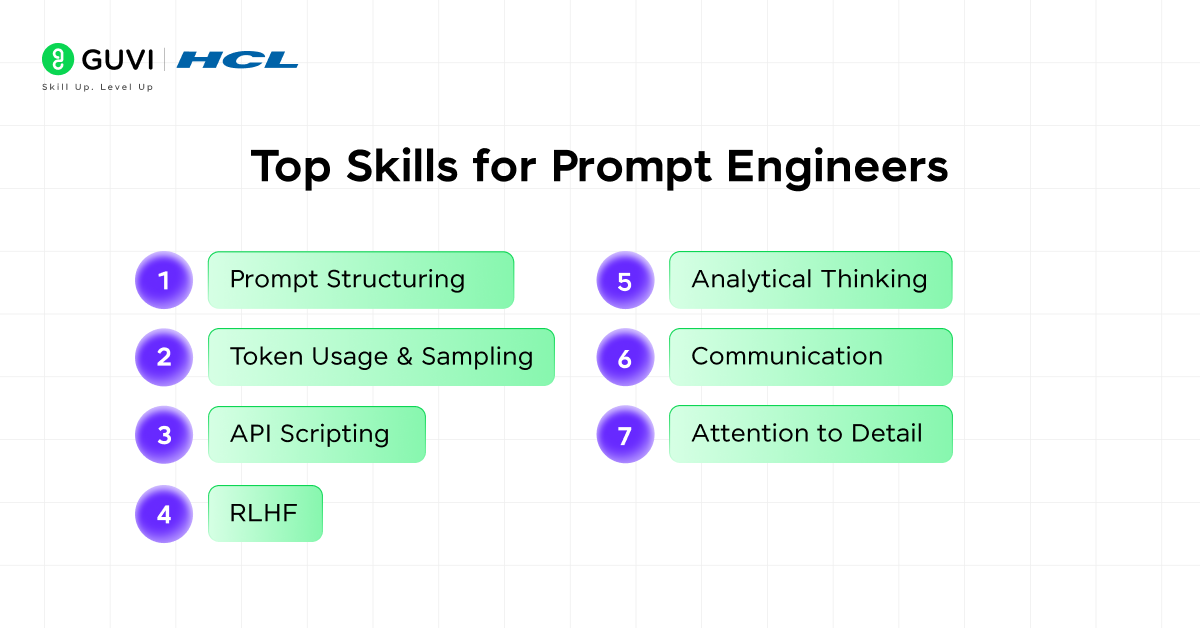
Here are top technical and soft skills that define high-quality prompt engineer jobs across industries.
Top Technical Skills for Prompt Engineers
- NLP Fundamentals: Understanding sentence embeddings and semantic similarity. This includes how models process queries internally.
- Prompt Structuring: Expertise in designing few-shot and multi-turn prompts to reduce hallucination.
- LLM Behavior Tuning: Familiarity with temperature, top-p sampling, repetition penalty, and other inference-time parameters.
- Python and API Scripting: Ability to build prompt test frameworks and connect to model endpoints via REST APIs or SDKs.
- Vector Embedding Integration: Experience building retrieval-augmented generation workflows and using embeddings to improve prompt context.
- Evaluation Metrics for Prompts: Using BLEU, ROUGE, and qualitative feedback loops to assess output alignment and prompt strength.
Prompt engineers in domains like demand forecasting or financial modeling may also work with reinforcement learning from human feedback (RLHF) techniques to tune model behavior toward precision.
Top Soft Skills in Prompt Engineering
Here are the leading soft skills companies expect from candidates in high-impact prompt engineering roles:
- Analytical Thinking: Breaking complex objectives into modular prompt components that models can interpret clearly.
- Creativity: Developing new prompt patterns or adjusting instructions in ways that help the model reason more effectively.
- Communication: Clarifying how prompts work, documenting design choices, and collaborating with teams that don’t have technical backgrounds.
- Attention to Detail: Catching small issues in prompt wording that can lead to inconsistent behavior or factual errors in the model’s output.
- Problem Decomposition: Breaking down vague business goals into precise prompt instructions that the model can understand and respond to reliably.
Soft skills become even more valuable when working with cross-functional teams that lack AI expertise but need predictable model outputs.
How to Become a Prompt Engineer Step by Step?
Building a career in prompt engineer jobs requires more than just curiosity about language models. It involves a structured learning path, hands-on experimentation, and the ability to demonstrate measurable results.
Professionals entering this role must balance technical understanding with real-world application thinking. Here’s how to develop the skill set and credibility employers look for in this space.
Here are the core steps to become a prompt engineer:
- Learn how language models work at the architecture level: Study how transformers process input sequences, allocate attention, and predict tokens. Focus on concepts like context windows, positional encoding, and model alignment techniques.
- Understand prompt design patterns and failure modes: Explore few-shot prompting, zero-shot instruction tuning, and chain-of-thought workflows. Practice writing prompts that reduce hallucination and improve consistency.
- Gain hands-on experience with LLM APIs: Work with GPT-4, Claude, Gemini, or other available endpoints. Test prompts under different inference settings such as temperature tuning and token limits.
- Build a public or private prompt portfolio: Create and document tested prompts across domains such as legal, healthcare, or AI for demand forecasting. Use platforms like GitHub or Hugging Face to version and share your work.
- Learn Python for prompt testing and evaluation: Write scripts that automate prompt calls and analyze output variations. Use these tools to test prompt reliability under batch processing or parameter shifts.
- Complete industry-recognized certifications: Enroll in structured programs that cover AI fundamentals, model behavior, and prompt engineering techniques with applied project work.
- Study prompt safety and compliance strategies: Understand how to design prompts that comply with ethical, legal, or policy guidelines. Test how prompts behave under adversarial or ambiguous inputs.
- Engage with prompt engineering communities and research: Join specialized forums or follow updates from model providers. Analyze how real-world teams structure prompts inside SaaS tools or enterprise systems.
Certification and Education Requirements
Following are the most relevant degrees, certifications, and training strategies for professionals pursuing jobs for prompt engineer positions.
Preferred Degrees and Academic Backgrounds
Employers value technical depth and linguistic precision. While not all roles require a degree, the following academic paths are most common among current professionals:
| Degree Type | Relevance |
| B.S. in Computer Science | Strongly Preferred |
| M.S. in Artificial Intelligence | Advantageous |
| B.A. in Linguistics | Useful for language modeling |
| B.S. in Cognitive Science | Growing in value |
| B.S. in Mathematics | Beneficial for algorithmic logic |
Candidates without formal degrees may still qualify by presenting strong project portfolios and prompt performance benchmarks.
Recommended Prompt Engineering Certifications
Certifications validate applied skills in model behavior, prompt testing, and deployment across tools used in prompt engineer jobs. Here is a curated list that reflects current industry-recognized programs.
| Provider | Certification Name | Focus Area | Price |
| GUVI | AI/ML Course | Model fundamentals and prompt workflows | ₹90,000 |
| Google Cloud | Generative AI Leader | Gemini API usage | $99 (exam only) |
| Coursera (DeepLearning.AI) | ChatGPT Prompt Engineering | Applied prompt logic | Free to audit or $49–$79/month |
| edX | LLM Applications in Business | Enterprise-grade prompting | $50–$300 (verified track) |
| Udemy | Prompt Testing with Python | Hands-on scripting and testing | ~$49.99–$54.99 (before discounts) |
Salary Expectations for Prompt Engineers in 2025
Here is a detailed breakdown of salaries and compensation trends for prompt engineer jobs:
Salary Ranges by Experience Level
| Level | Salary Range (INR per year) |
| Junior Prompt Engineer | ₹7,00,000 – ₹15,00,000 |
| Mid-Level Prompt Engineer | ₹15,00,000 – ₹35,00,000 |
| Senior Prompt Engineer | ₹35,00,000 – ₹65,00,000+ |
Common Benefits and Job Perks
Companies hiring for prompt engineer jobs often provide:
- Remote setup stipends
- Equity or profit-sharing
- Annual training budgets for LLM experimentation
- Paid access to premium AI platforms
- Model API credits for R&D
- Custom laptop and token-budget configurations
Some roles include early access to experimental models or internal usage rights for new capabilities from providers like OpenAI or Anthropic.
Top Industries Hiring Prompt Engineers
Here are industries showing the highest demand for prompt engineers:
- Technology and SaaS: Core LLM product companies and API service providers.
- Healthcare and Life Sciences: For AI-assisted diagnostics, patient reports, and drug information prompts.
- Finance and Insurance: For compliance bots, contract summarization, and risk modeling assistants.
- Retail and Logistics: Where predictive analytics in the supply chain relies on high-quality prompts for demand modeling.
- Marketing and Content Platforms: For ad generation, copy optimization, and brand-aligned tone modeling.
Why the Demand for Prompt Engineers is Rising in 2025?
Three key forces are driving job market acceleration:
- Model Expansion: More companies are building applications on top of open and closed-source LLMs.
- Non-technical Usage: Teams without engineering backgrounds rely on reusable, structured prompt templates.
- Customization Needs: Each business case requires its prompt logic. A generic chatbot prompt doesn’t serve legal, medical, or forecasting use cases well.
Also, as companies embed generative AI into planning tools, like those supporting AI for demand forecasting, the prompt layer becomes core infrastructure.
List of Top Companies Hiring Prompt Engineers
Below is a snapshot of employers with strong hiring activity for prompt engineer jobs:
| Company | Type | Focus Area |
| OpenAI | Research & Product | GPT deployments and instruction tuning |
| Anthropic | AI Safety | Claude prompt structure and tool alignment |
| Google DeepMind | Applied Research | Gemini-based app ecosystems |
| Microsoft | Enterprise AI | Azure OpenAI integrations |
| Midjourney | Creative AI | Visual and text-to-image prompt logic |
| SAP | Enterprise Solutions | Embedded AI in ERP and supply tools |
| Amazon | Retail Tech | Product search and fulfillment prompts |
| Notion, Airtable, Linear | AI-first SaaS | Feature-rich LLM integrations |
| Startups (Stealth/VC-backed) | Cross-industry | Niche apps using LLM wrappers |
Many roles are remote-first, with compensation and equity linked to experience and domain familiarity.
How to Land a Prompt Engineer Job?
The following are practical strategies and tools to break into the field and compete effectively for jobs for prompt engineer roles.
- Start with measurable impact: Show how your prompts improved performance metrics or reduced hallucination rates.
- Include tool-specific sections: Note API experience, model types used, and frameworks applied.
- Use industry language: Mention specific use cases like AI for demand forecasting or policy-compliant AI applications.
- Link to portfolio and code: GitHub, Hugging Face Spaces, or open demos build credibility.
- Tailor for each company: Use phrasing that reflects their specific AI products or needs.
Avoid filler words and prioritize prompt-related results and show your understanding of LLM limitations.
Career Growth and Future Opportunities
Following are growth paths and technical evolution trends defining the long-term role of prompt engineers.
- Senior Prompt Engineer: Manages prompt libraries, test suites, and team-level prompt strategy
- AI Product Owner: Aligns prompt behavior with business rules, use-case intent, and model updates
- PromptOps Manager: Builds prompt observability, governance, and logging infrastructure for compliance
- LLM Integration Consultant: Designs enterprise model deployments including prompt logic, evaluation, and monitoring
- Instruction Design Director: Leads content-level prompt strategies in education, healthcare, or regulated content
The Future of Prompt Engineering: Emerging Trends and Roles
The future of prompt engineering is moving toward deeper system integration and operational accountability. Engineers will guide multiple AI agents with role-specific prompts and manage versioned prompt registries to track performance and updates. Prompt behavior will be governed like code, requiring review, testing, and compliance validation. Interfaces will embed prompts into visual tools and multimodal systems, shaping how users interact with AI across spatial, voice, and embedded contexts.
Prompt engineers will also build structured flows into enterprise software, making them essential to LLM-native applications. This evolution positions prompt engineering as a core layer between product intent and AI behavior across industries.
If you’re looking to break into prompt engineering or expand your applied AI skill set, GUVI’s AI/ML Course offers a strong starting point. With practical projects, expert-led modules, and exposure to real-world LLM workflows, it helps you build the foundational knowledge and prompt engineering mindset required to succeed in today’s AI roles.
Conclusion
Prompt engineering has moved beyond experimentation and into operational necessity. As large language models are embedded across planning, customer experience, content generation, and business intelligence, the need for structured, testable, and purpose-aligned prompt inputs is driving rapid hiring growth. Organizations are now treating prompt logic as a core part of system design, not a temporary workaround.
Whether you’re building prompts for a chatbot, a regulatory compliance tool, or an AI for demand forecasting system, your ability to think in tokens, reduce ambiguity, and improve output reliability defines your value in this role. The salary benchmarks reflect that reality.
FAQs
1. Can I work remotely as a prompt engineer?
Yes. Most companies offer remote-first roles. Prompt engineers working remotely often collaborate with distributed teams and manage model testing, prompt iteration, and prompt safety workflows online using APIs and cloud tools.
2. Do you need a degree to become a prompt engineer?
A degree is helpful but not mandatory. Many employers hire based on strong portfolios, tested prompts, and familiarity with AI systems. Certifications and hands-on projects often weigh more than academic credentials.
3. Is prompt engineering the next big thing?
Yes. As LLMs go mainstream, prompt engineering is essential for AI product performance and reliability.
4. What is the average salary for a prompt engineer?
Between $85,000 and $215,000, depending on experience, location, and domain specialization.
5. Is prompt engineering a stressful job?
It’s high-responsibility but manageable. Clear scope and structured tools make it less stressful than many tech roles.
6. Is prompt engineering a high-paying job?
Yes. It’s one of the top-paying roles in applied AI, especially in regulated or enterprise domains.
7. Is there a certification for prompt engineering?
Yes. Courses from OpenAI, GUVI, Coursera, Google Cloud, and others offer prompt-specific certifications.
8. Can a fresher become a prompt engineer?
Yes. With projects, prompt portfolios, and certifications, freshers can qualify for entry-level roles.




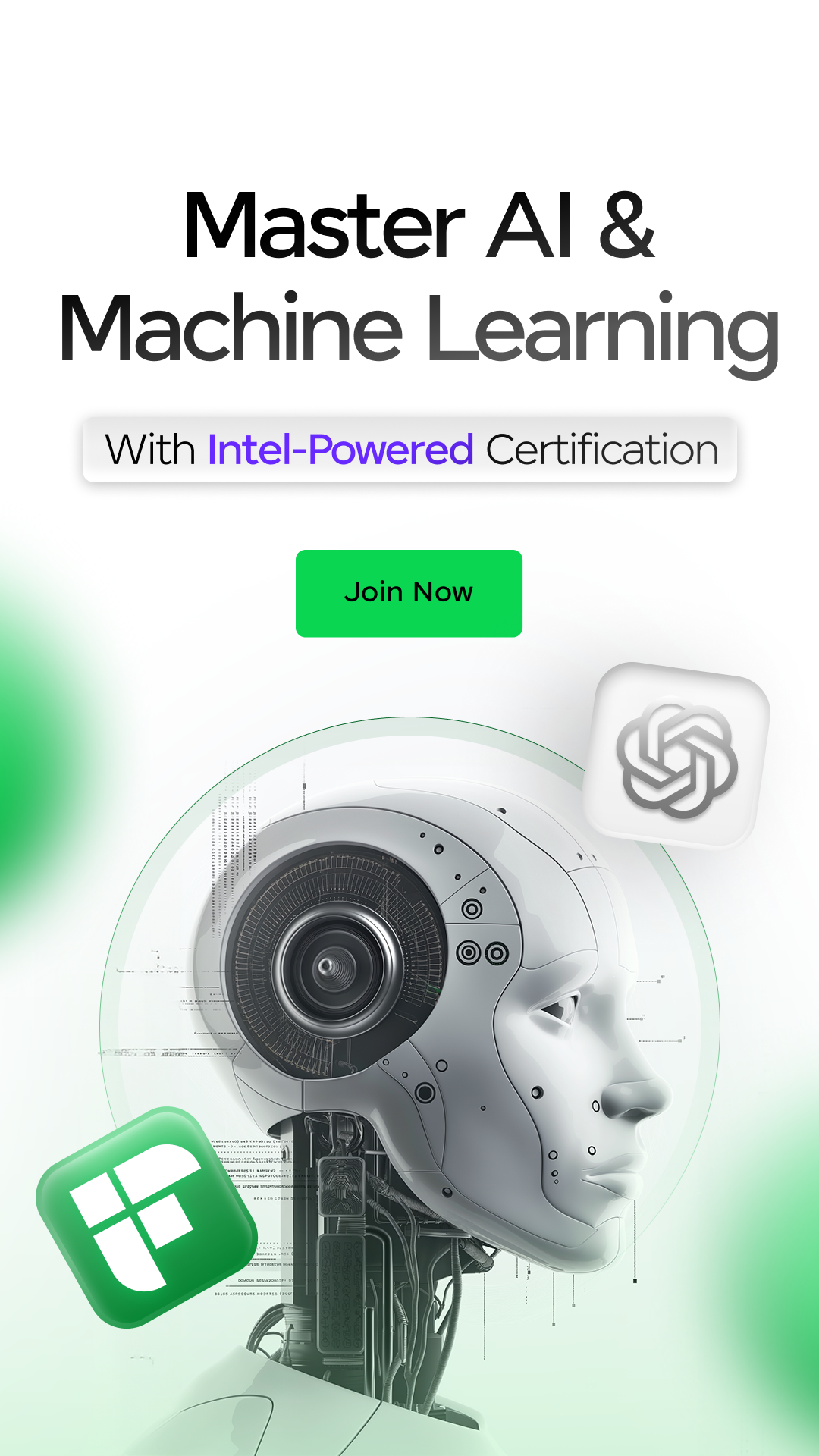
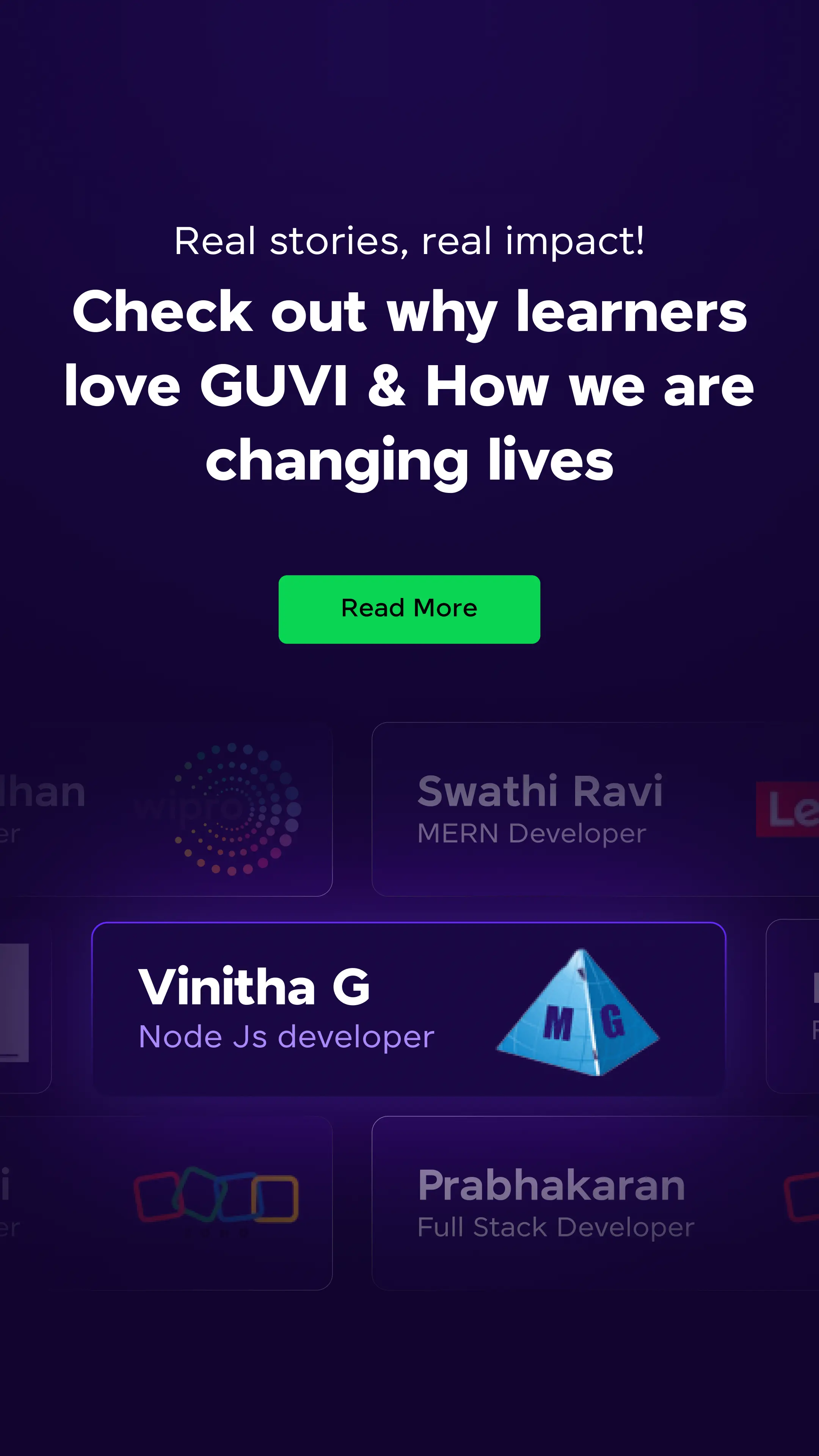

























Did you enjoy this article?